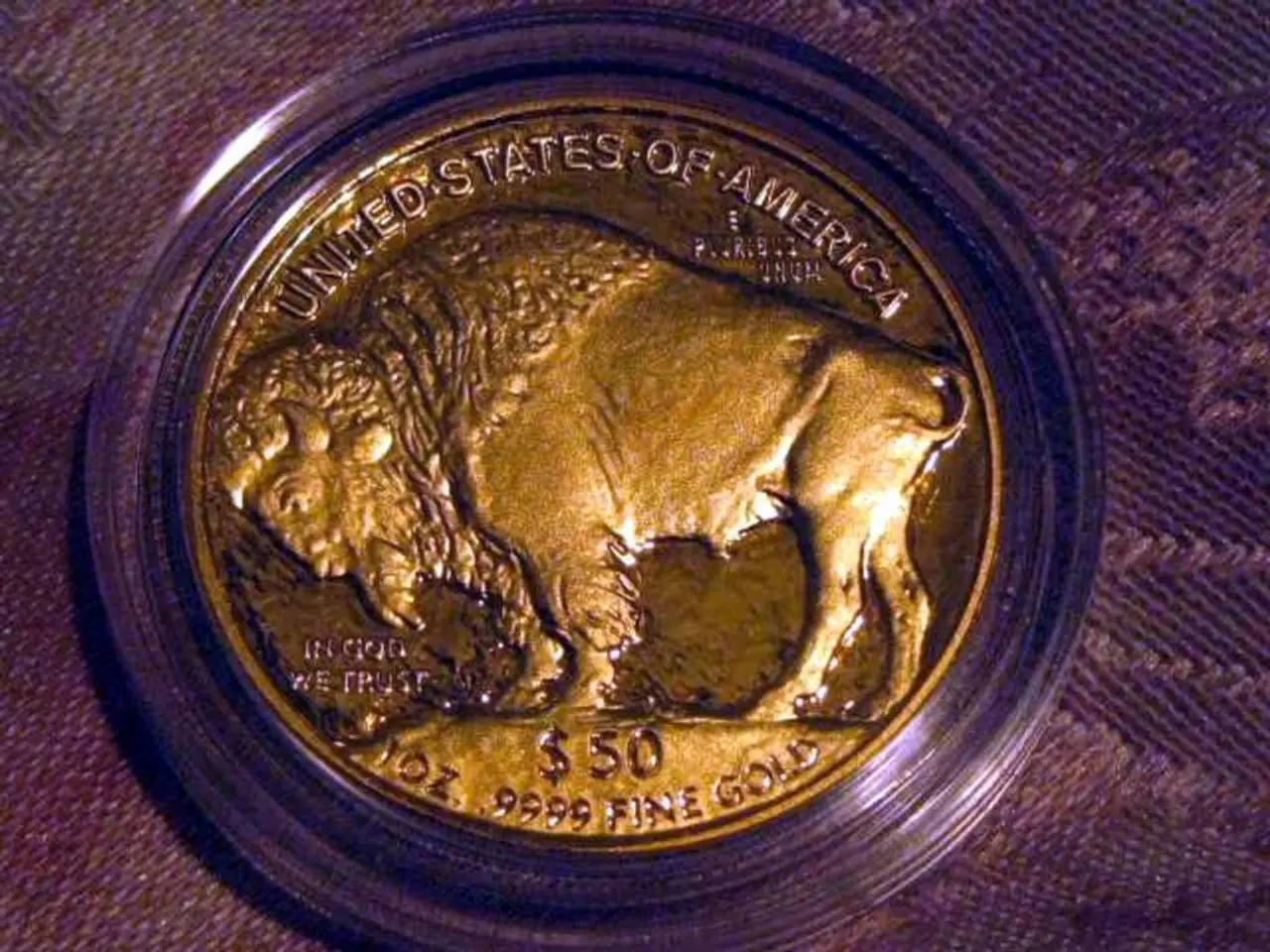Is the future uncertain for the U.S. currency?
In the ever-evolving world of finance, the dominance of the U.S. dollar is being challenged as global tensions rise and assumptions that once underpinned its power can no longer be taken for granted. The focus is shifting towards alternatives, but this doesn't mean abandoning the dollar entirely. Instead, it's about managing the risks around it more deliberately and being prepared for what might come next.
Aaron Hurd, senior portfolio manager at State Street Investment Management, argues that the era of low risk and high returns from unhedged dollar exposure is over. This sentiment is echoed by Jens Søndergaard, currency analyst at Capital Group, who questions whether the US still wants to lead, whether the world still trusts it to do so, and whether any serious alternative to the dollar exists.
One potential alternative is a multipolar currency system, similar to the 1920s-1930s pound-dollar coexistence, where major currencies like the dollar, euro, and yuan could share global reserve functions. This hybrid approach may include commodity backing to some extent.
Another possibility is regional currency blocs, where distinct currency spheres, such as a dollar zone, euro zone, or yuan zone, with satellite currencies might arise, reducing reliance on the dollar globally.
Tying currencies to gold or commodities could provide stability amid geopolitical and financial uncertainty. This concept, known as commodity-backed currencies, is another contender in the race to challenge the dollar's dominance.
The rise of digital currencies, particularly central bank digital currencies (CBDCs) and stablecoins, is also seen as a technological challenge to dollar dominance. Countries like China have launched digital yuan, while BRICS are developing alternative payment platforms.
However, China's renminbi faces challenges, such as limited exchangeability and closed capital accounts, which limit its global use, though efforts continue to promote international renminbi use.
Central banks, especially outside the West, have been building gold reserves as a hedge, signaling a move toward de-dollarization. This trend is evident in the return of gold as a core reserve asset, largely because it is not tied to any single sovereign and is increasingly viewed by central banks as a reliable hedge against volatility and geopolitical risk.
Transitioning away from dollar dominance could entail currency crises and market volatility due to the extensive dollar-denominated debt and derivatives globally. Therefore, for any safe asset to rival US Treasuries, it must be built on a foundation of fiscal responsibility, credible repayment mechanisms, and clearly defined rules.
The OMFIF Bulletin's latest edition examines the reassessment of allocation strategies due to trends driving a reassessment of the dollar's dominance in global finance. The leading view is that the dollar will remain dominant in the near future unless significant disruptions occur, but trends indicate gradual de-dollarization through diversification into other currencies, digital money, and commodities is underway.
In sum, the future global financial landscape may be multipolar, combining diverse fiat currencies, digital currencies, and commodity backing, rather than a single outright dollar replacement. This transition will likely be complex and gradual with varying outcomes for different regions.
Harold James, Claude and Lore Kelly Professor in European Studies at Princeton University, highlights that the current shift mirrors past periods of geopolitical stress. Central banks are once again increasing their gold holdings in search of protection from instability and politically exposed financial assets.
As we navigate this period of change, it's crucial to stay informed and adapt our investment strategies accordingly. The future of global finance is uncertain, but one thing is clear: the era of unquestioned dollar dominance is coming to an end.
[1] OMFIF Bulletin (2021). The Reassessment of Allocation Strategies: Driving a Reassessment of the Dollar's Dominance in Global Finance. [2] Sobel, M. (2021). The Dollar's Dominance: A Structural Change or Short-Term Market Movements? OMFIF. [3] Aziz, Y. (2021). Central Bank Gold Accumulation: A Hedge Against De-Dollarization? OMFIF.
- In the field of economics and finance research, the dominance of the U.S. dollar is being scrutinized due to rising global tensions.
- Aaron Hurd, a senior portfolio manager at State Street Investment Management, posits that the era of low risk and high returns from unhedged dollar exposure has ended.
- Jens Søndergaard, a currency analyst at Capital Group, questions if the US still wants to lead, if the world still trusts it, and whether an alternative to the dollar exists.
- One potential alternative to the dollar is a multipolar currency system similar to the 1920s-1930s pound-dollar coexistence, using major currencies like the dollar, euro, and yuan.
- Another possibility for an alternative is regional currency blocs, where dollar, euro, yuan zones, and satellite currencies reduce reliance on the dollar.
- Tying currencies to gold or commodities provides potential stability in times of geopolitical and financial uncertainty, like in the concept of commodity-backed currencies.
- The rise of digital currencies, such as central bank digital currencies (CBDCs) and stablecoins, is seen as a technological challenge to dollar dominance, with nations like China and BRICS developing alternative payment platforms.




